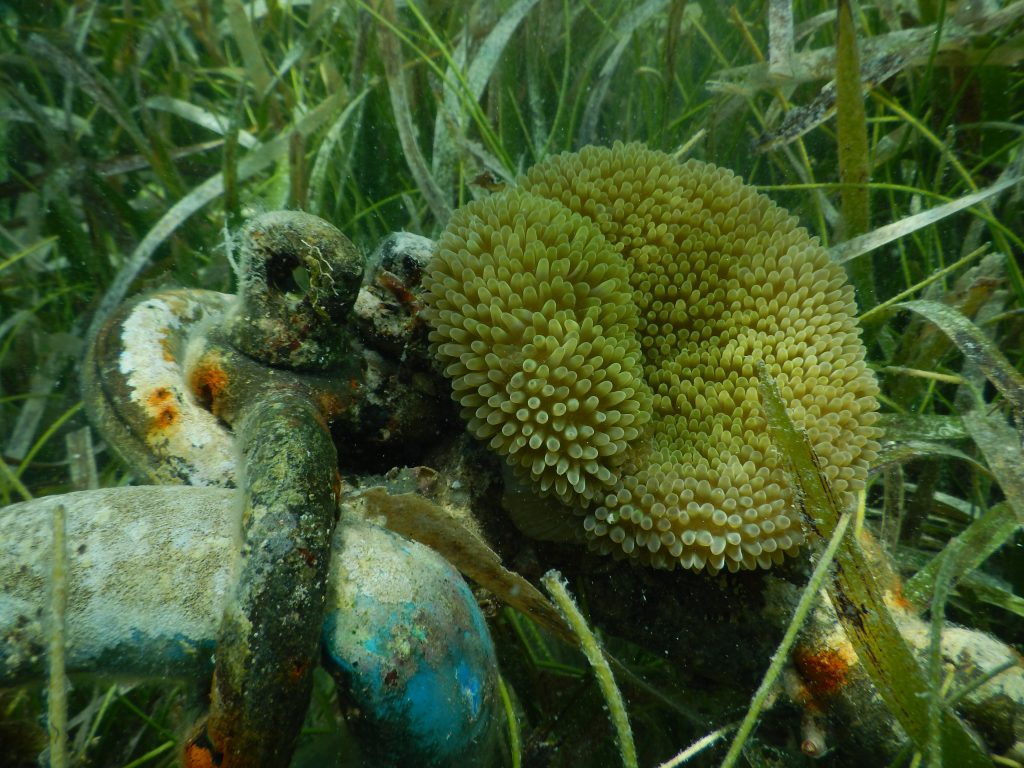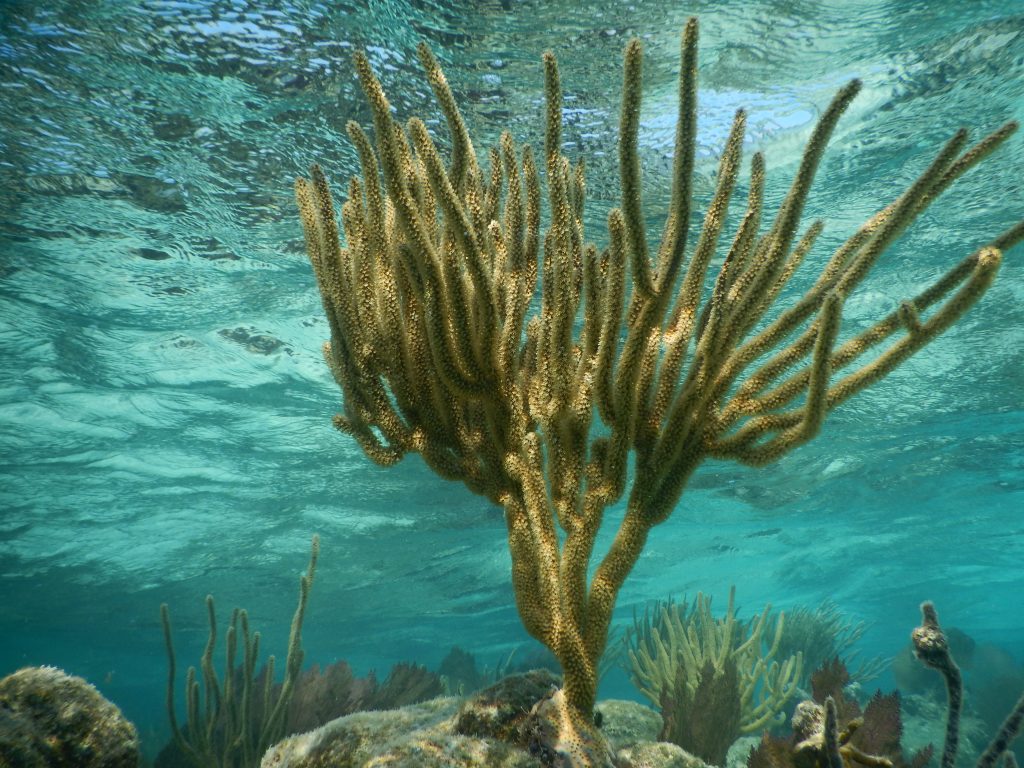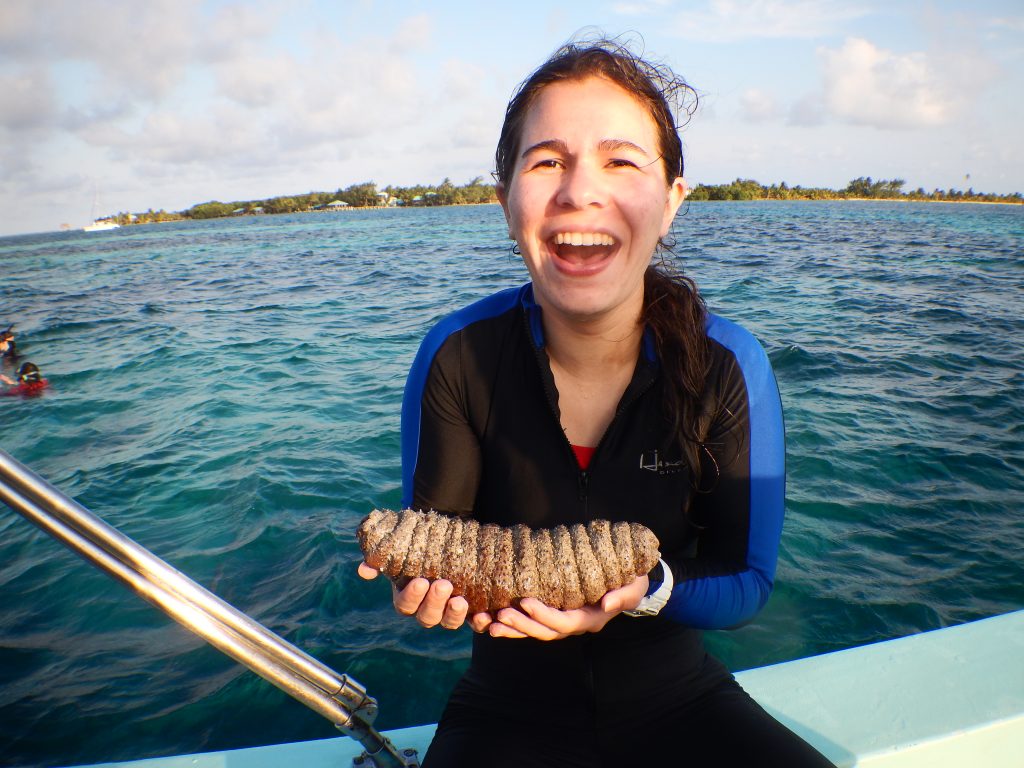5.18.2017
I finally got to use my quadrat today on land and in water. We started the day looking at crab density on Middle Caye and then snorkeled through the seagrass beds surrounding the island to determine the diversity of life in that particular ecosystem. Success was limited. I saw zero crabs or crab holes in my sampling area on land, and I only saw a couple of small snails and one anemone in my sampling area in the water. On the bright side, I got to closely analyze the seagrass bed which is one of my taxonomic groups. I noticed a lot of juvenile snapper and other small fish roaming around the sea bed, which is indicative of the ecosystem’s importance as a nursery.

The best part of the day was by far the patch reef – I’m pretty sure I died and came back to life in soft coral heaven. Although I didn’t bring my clipboard and identification sheet with me into the water, I was able to recognize a variety of groups including sea fans (G. ventalina), sea plumes (Pseudopterogorgia spp.), and sea rods (Plexaura spp.). The reef was absolutely stunning and I found myself constantly looking around amazed while working with my quadrat.


While on the reef, we were also tasked with collected sea urchins to bring back to the wet lab for further data collection. One of the urchins I was able to find and successfully retrieve was a beautifully patterned pencil urchin. I also saw a long-spined urchin but got a bit too excited trying to pry it off the rock and ended up with a souvenir spine in my fingertip. The excitement didn’t end with a prick of my finger, though. I also got squirted by the aptly named Donkey Dung sea cucumber.

The day ended late with a guest lecture by Alex Tewfik of the Wildlife Conservation Society, two 15 minute taxon briefings on sponges and soft corals (the former given by yours truly), and another 30 minute topic lecture on microbes. All in all, it’s been a really productive day but I’m most definitely ready to head to bed.

